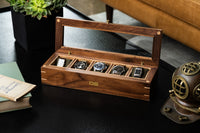Take even a cursory survey of the menswear landscape — now, or at some indeterminate point over the past few years — and you’re bound to encounter the chore coat.

The Chore Coat has its origins in 19th century France - (Image by Heddels)
Existing somewhere between a worker’s overshirt and a stripped-down blazer, the chore coat has its origins in 19th century France, where a cotton drill or moleskine shirt featuring roomy pockets was colored with a benzoate-based blue dye, which would hide stains from manual labor. Known as the bleu de travail — literally “blue work,” but effectively “dungarees” or “overalls” today — it became ‘standard issue’ for farmers, laborers, railway workers, and anyone living a hard, outdoor lifestyle. By the 1920s, French brands such as Vetra (from vetements de travail, or “work clothes”), Le Laboureur, and Mont Saint Michel began serial production of what had been a tailor-made affair, and the coat spread ‘across the pond.’
 Trade show display 1898 (Image by Man of the World)
Trade show display 1898 (Image by Man of the World)
In the United States, venerable menswear legend Levi Strauss & Co. had been producing its own version of the bleu de travail since roughly 1880, when it appeared in the brand’s catalog as a “Sack Coat” — though examples may have been produced as early as the 1870s. (In the brand’s archive is a 67 Sack Coat dating to 1910 — the earliest extant example.)
 Early version of left breast pocket Chore Coat - (Image by Carhartt Archive)
Early version of left breast pocket Chore Coat - (Image by Carhartt Archive)
Slightly later, Carhartt took up the mantle of the bleu de travail as well, christening it the “Engineer Sack Coat” or “The Coat.” While an early version from 1917 features several characteristics of the bleu de travail, a more contemporary model available in sail cloth drill, herringbone twill, and two types of denim first appeared in the Carhartt catalog in 1925.
By 1928, it was being produced in brown duck, while the 1930s saw several important additions — namely, the brand’s signature corduroy collar, as well as optional blanket lining. In 1954, a by-swing back allowing for shoulder stretch was introduced, while a change notable in the horological sphere reared its head: due to the heightened popularity of wristwatches, a special pocket watch pocket was no longer necessary, and was subsequently done away with (shame!).
 New York Times columnist and legendary streetwear photographer Bill Cunningham wearing a Chore Coat
New York Times columnist and legendary streetwear photographer Bill Cunningham wearing a Chore Coat
The Boss, Pointer Brand, and others soon followed suit, helping to spread the chore coat throughout the United States — which, though it no longer featured its signature blue color, became a workman’s staple, along with blue jeans and worker’s boots. Triple-stitched seams, copper rivets, and “blood-proof” pockets for storing game were now common, and though the garment continued to be worn by “blue collar” workers — a moniker that originated in 1920s America and named for the laborers clad in blue jeans and chore coats — it was also readily adopted by cultural icons: Paul Newman sported one in 1967’s Cool Hand Luke, while Tupac Shakur wore won to the 7th Annual Soul Train Awards in 1993. New York Times columnist and legendary streetwear photographer Bill Cunningham could even be seen wearing one while riding his bike around the City well into his 80s.
These days, the original bleu de travail, though it can still be had in blue drill, is available in more hues, configurations, and materials than one can safely shake a stick at. Recut in a slimmer fit, it’s become a streetwear staple — much like workwear in general — and no longer just the purview of the blue collar laborer. While some may scoff at the irony of office workers adopting attire meant for labor few would volunteer for, this pattern is one that’s been repeated throughout the history of menswear: The t-shirt, the field jacket, jump boots, pretty much any shirt with the vestige of epaulets on it — each of these was once a strictly military garment. Once veterans popularized these now iconic pieces by wearing them post-discharge, they penetrated the zeitgeist to the point that they’re simply unrecognizable to the average youngster as ever having been a strictly utilitarian object. (Much like the chronograph...)
In a post-pandemic world where the suit has largely gone the way of the dodo in all but the most formal work environments, the chore coat also provides a convenient half-step between streetwear and “business casual.” With its patch pockets and collar, one can more or less easily substitute a chore coat for a sport coat without attracting too many raised eyebrows, which the big-city creative set has largely done without any prompting. And with options available from under $100 to well over $1,000, there’s truly something for everybody.
Some Cool Chore Coats to Check Out

Brooks Brothers Stretch Cotton Twill Chore Jacket $99

Wills Wrinkle Free Chore Coat $158

Vetra Knitted Virgin Wool Jacket ~$276














